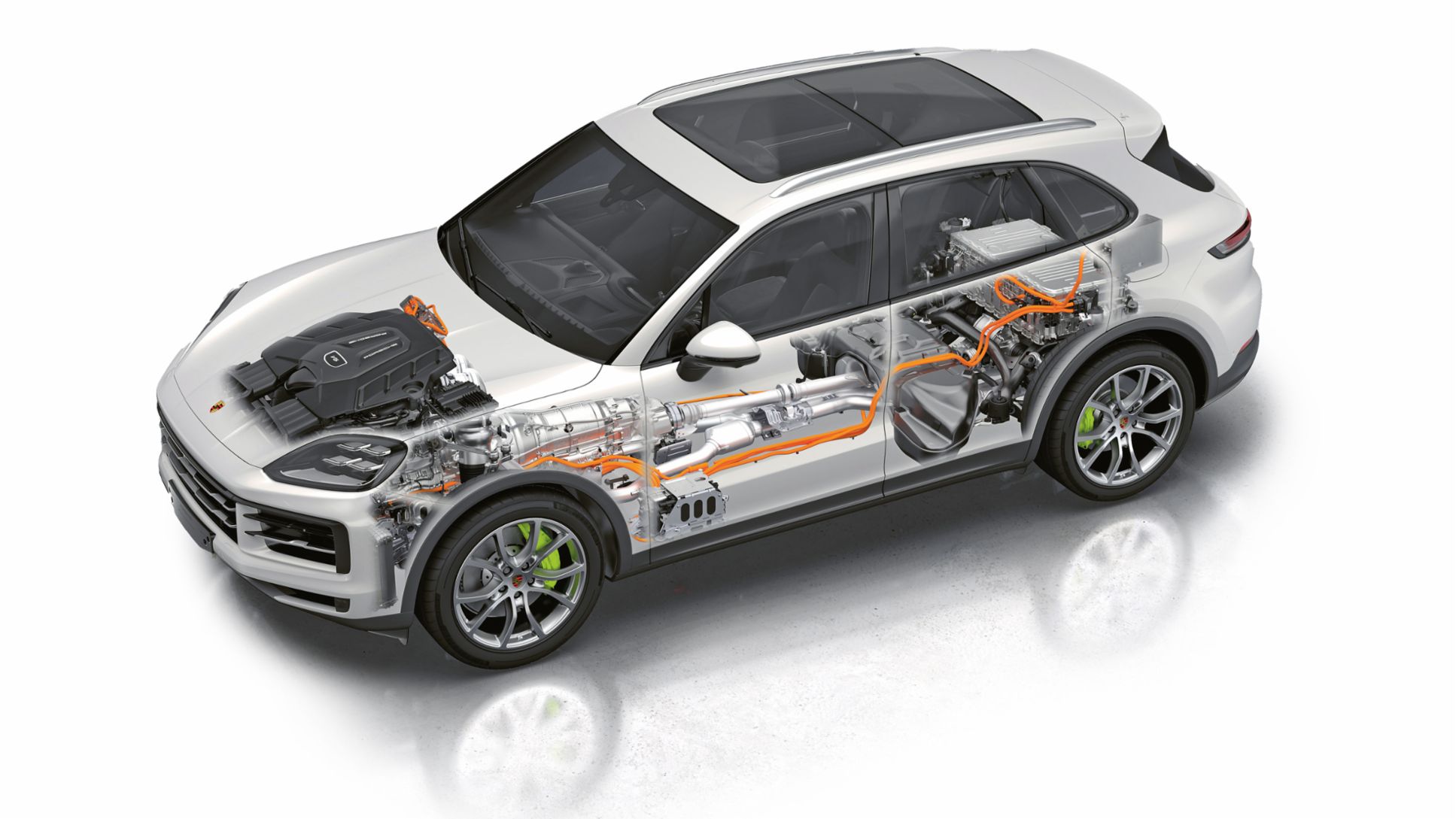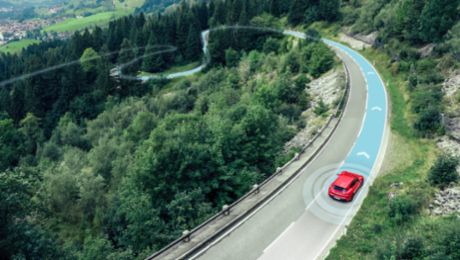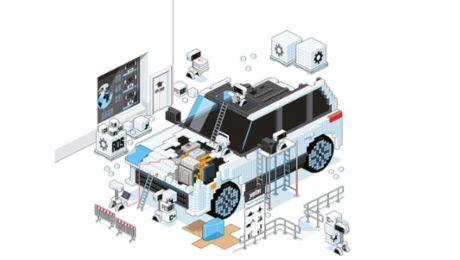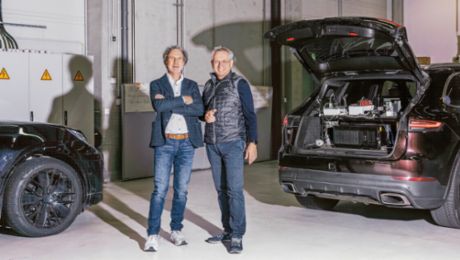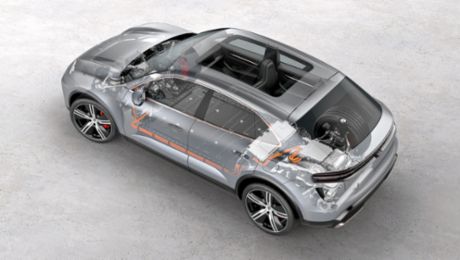Software is increasingly becoming the decisive factor in the vehicle, because it enables new functions and plays an increasingly big role in value creation. However, the customer experience does not depend exclusively on the skills of the programmers—it is also crucial to combine and harmonize software and vehicle hardware in a way that results in optimal performance. This in a way applies in particular to the propulsion system and chassis, which significantly influence the driving experience. Porsche Engineering has therefore founded the new ‘Drive System’ division, in which experts for hardware and software work closely together in the areas of chassis and propulsion system. The team has the ability to develop and integrate complete systems—from requirement definition and function development, calibrating software and actuators, testing and validation.
Focus on System Integration
“One of our central tasks is system integration,” says Eva-Verena Ziegahn, Director Drive System at Porsche Engineering. “This includes the implementation of code in ECUs as well as the calibration and validation of new functions.” Porsche Engineering took charge of numerous development scopes while work was progressing on the Porsche Cayenne. From the beginning, the seamless integration of hardware and software was the focus for the propulsion system and chassis. “The Cayenne is characterized by the wide spectrum of driving comfort and sportiness,” explains Ziegahn. “This is achieved, for example in the case of active anti-roll stabilization, through innovative software and parameterization as well as integration into the overall chassis. In the process, we have to factor in the complex interactions in the chassis, where all-wheel drive, front and rear-axle steering, the brake system and the electric drive influence the driving experience.”

Ziegahn calls the development and calibration of an innovative system in the chassis as an example of a successful interaction between hardware and software: Dampers with 2-valve technology and separate rebound and compression stages are being used for the first time in the luxury SUV. Developed by Porsche Engineering together with a supplier, they allow a broader spectrum between sporty and comfortable driving, resulting in optimized performance in all driving situations. The innovative hardware also made a notable difference when it came to the requirements for software development: “Due to the new 2-valve dampers, the controller components had to be changed and new interfaces to the basic software had to be defined,” as Fabian Heitkamp reports, development engineer at Porsche and responsible for the electric chassis platform (EFP). “Moreover, there was only a little we were able to adopt from the previous version for the control unit and the basic software. In short: No stone has been left unturned.”
Cooperation with Cariad
Porsche Engineering had component responsibility for the new control unit and also jointly coordinated the development of the new basic software with Porsche at the supplier. “We also assumed responsibility for the complete functional software,” explains Marcus Schmid, Development Engineer at Porsche Engineering and responsible for integration management. “Due to the higher complexity of the new 2-chamber air spring/2-valve damper system as well as the joint development for further model lines, we needed 17 instead of the previous 10 functions, some of which came from us and some from Cariad."
To keep pace with the tight schedule and master the high complexity of the task, the developers tested the new software long before the new control unit and the new basic software were available. “We try to test the communication and interaction of the various functions as early as possible via hardware-in-theloop (HiL) or on the test bench,” says Ziegahn. “At Porsche Engineering, we have built up an international team at our various locations that supports us at an early stage—both in function development and in HiL testing.”
The importance of such methods is also emphasized by Michael Becker, Cayenne Chassis Project Manager at Porsche AG: “Without these methods, we would have no chance at all, because it’s impossible to install a software version in the car and simply drive off with it right away. With HiL tests, for example, we can check whether the individual software components work together at all. And we can’t forget that there are many points in the chassis that are relevant from a legal standpoint.”
Even in the early stages of development, the developers were able to implement numerous optimizations thanks to virtual methods, making it possible to focus primarily on the fine-tuning in later stages of the development. This will continue to be crucial in the future, as the complexity of the systems and components continues to rise. At the start of the process, model-in-the-loop tests (MiL) examining the behavior of the MATLAB/Simulink models from which the code was later to be generated were carried out. The code then had to demonstrate that it fulfilled requirements in software-in-the-loop tests (SiL). This was followed by processor-in-the-loop (PiL) tests, in which the code ran on a microprocessor that was very similar to the model used later in the ECU. As soon as the new ECU and the new basic software were available, tests were carried out on hardware-in-the-loop test benches.
“Porsche Engineering was able to cover the entire chain—from function development and implementation of the functions in the basic software to the tests and integration in the vehicle,” as Heitkamp underscores This was made possible by an international team encompassing the whole range of required skills. Experts from Germany, the Czech Republic and Romania were responsible for code generation and the development of functions as well as their testing and validation in networked teams, including SiL and HiL tests and test automation. “Porsche Engineering always provided the required resources right when we needed them,” says Heitkamp. “In this way, we were able to complete the project on time despite all the challenges.”
Imperceptible Blending of Friction and Recuperative Brake
The developers also focused on the interaction between hardware and software for the brake system for the new Cayenne. Their task: The driver should have the best possible pedal feel and should not be able to perceive the respective share of the hydraulic friction brake and the share of the electric motor in vehicle deceleration. The recuperation function is responsible for this ‘blending’ between the hydraulic friction brake and recuperative braking. The exact composition of this mix depends on numerous factors. “Basically, our goal is to use recuperative braking as much as possible, thereby reducing the average energy requirements of the vehicle as much as possible and thus, among other things, increasing the electric range of the vehicle,” explains Lisa Helbig, Development Engineer for Brake and Steering Systems at Porsche Engineering. “The hydraulic friction brake comes into play, for example, when the deceleration of the electric motor is insufficient or when the vehicle could become unstable due to recuperation on the rear axle.”
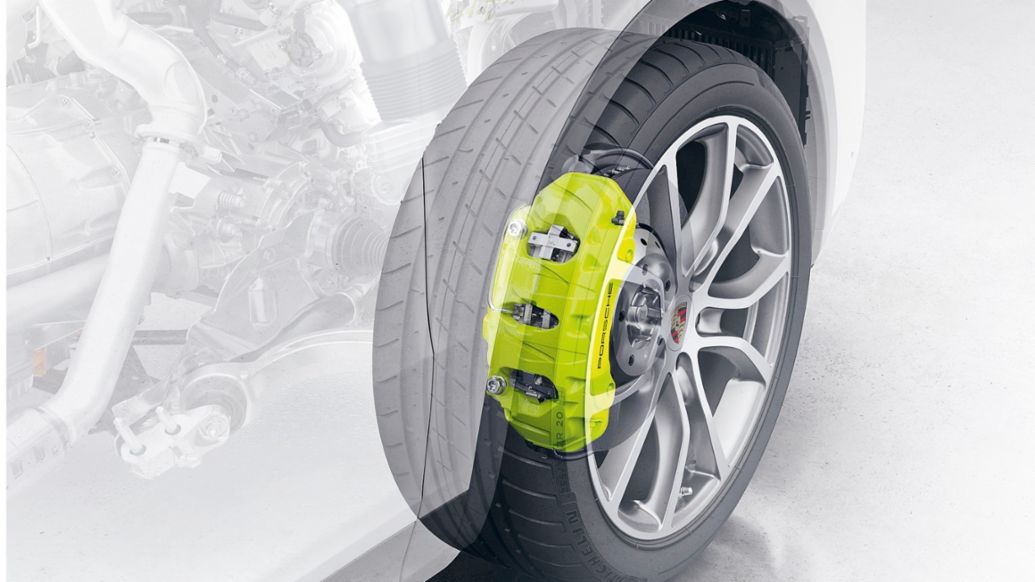
The interconnected software components of the brake system also helps to compensate for changing characteristics of the friction brake in the best possible way. Both the temperature and the wear on the brake over time are taken into account. One particular challenge is that the algorithms run on different control units, which is why the software for the braking system could only be applied to the overall system of control units. While the software for the eBKV originated from a supplier, Porsche Engineering handled the calibration of the functions and their testing. The final step was the approval of the vehicles together with Porsche.
Significantly better Pedal Feel
“We have achieved our goal: The driver does not perceive any interaction during the transition between recuperative and hydraulic braking,” as Alexandros Athanasiadis sums up, who was responsible for the approval at Porsche. “Compared to its predecessor, we were able to further optimize the blending. In the end, we are measured by the pedal feel, which we were able to design optimally with the help of the software.” As an example, he mentions the new “cold characteristic” for the friction brake. It provides greater brake boosting when the car drives off while the brakes are still cold— and thereby ensures the desired constant pedal feel. In addition to comfort, the efficiency of the Cayenne is also improved by the new design of the recuperation function: The deceleration capacity of the recuperation of the new Cayenne has been increased to up to 88 kilowatts, a roughly 30 percent increase. Moreover, recuperation can now be deployed almost until the vehicle comes to a standstill; before now, the limit was 14 km/h.
Noise suppresses Noise
In addition to the new damper system and the hybrid brake, Porsche Engineering was also involved in the development, testing and validation of the pulse inverter (PWR) for the new Cayenne from the very beginning. In this case, the main thing was to make the transition from the combustion engine to the electric motor imperceptible to the driver while at the same time enhancing the vehicle’s performance. Among other characteristics, the newly developed pulse inverter is characterized by a variable switching frequency and different modulation methods, which are optimized according to the current operating point. “Reducing the pulse frequency of the pulse inverter increases its efficiency, enabling a ten percent boost in the power output of the motor—only through intelligent control via software,” explains Pascal Heusler, Senior Manager Pulse Inverter Software and Calibration at Porsche. “This has a drawback in terms of noise. However, because this approach produces noise. The solution to this is to generate an artificial noise around the carrier frequency, which dilutes this motor noise.”

However, this approach cannot be applied to every operating point. The idea: The controller must react within a few milliseconds and adjust the switching frequency if necessary. “It’s a very innovative solution,” says Heusler. “We improve the system efficiency and at the same time ensure that with the sophisticated sound composition, the driver doesn’t hear a thing.”
The pulse inverter in the new Cayenne is used as a modular system throughout the VW Group—the same control unit is used in almost 100 different vehicle variants that use five different electric motors and three different transmissions. In addition, they are based on different platforms—either the new Volkswagen E3 electronics architecture or MLBevo. So system integration in this case also meant integration across different brands and vehicle classes, which the developers succeeded in doing. “From the outside, the variants can only be distinguished by their different connectors, the inner parts are always the same,” as Frank Deckert reports, Project Manager for Pulse Inverter Integration at Porsche Engineering. “We covered the entire variance with a single piece of hardware.”
Balancing Act with the Calibration
In order to reduce the work involved in the calibration, out of the roughly 100 vehicles developers formed groups with comparable characteristics, for example in terms of their performance and powertrains. All vehicles in a group receive the same data input, which poses a major challenge. The thermal model for the rotor and stator, for example, has a major influence on torque accuracy and component protection, but in turn depends heavily on the installation position in the vehicles. The configuration therefore requires a balancing act between the different models. The standardization of the calibration brings great advantages for future updates: By limiting the variance, the software maintenance effort is reduced (cost efficiency by concept).
“Overall, we have developed a top-notch system with state-of-the-art control,” says Heusler. “We were only able to achieve this because we worked closely with Porsche Engineering and our colleagues did a great job.”
The new Cayenne has been on the market since July 2023. Porsche and Porsche Engineering are currently working together on system integration for the variants of the luxury SUV. Another important success factor was the high level of trust between the contractor and the client. “At the beginning of such a project, not everything is defined to the last detail. There are situations in which you have to step in from one day to the next and temporarily expand the team with additional experts,” says Porsche project manager Becker. The approach of bringing hardware and software experts together at an early stage has proven fruitful. “The Cayenne project shows how important systematic system integration is,” says Ziegahn. “And it illustrates the important role simulation plays in development today. With them, we can do a lot of the preparation work for integration outside of the vehicle and later focus on the fine tuning. This is the only way to keep pace with the ever-increasing complexity of recent years.”
Porsche Engineering handled both the team management of the chassis series development team, including FAS/HAF, and large parts of the development of the propulsion system and chassis for the new Porsche Cayenne. The focus was on the characteristic Porsche driving experience, which requires optimal interaction of the hardware and software. A key factor in the project’s success was the successful system integration of all components.

2-Valve Damper System
Innovative performance at all times: The innovative 2-valve damper system was jointly developed by Porsche Engineering and a supplier. The innovative hardware also required extensive changes to the software for the control unit: Due to the higher complexity of the component as well as the joint development for other model lines, 17 functions are now required instead of 10 previously. To keep pace with the tight schedule and master the high complexity of the task, the developers tested the new software long before the new control unit and the new basic software were available.
Brake System
Imperceptible Transition: The brake system consists of two components: The hydraulic friction brake and the electric motor. The software of the the recuperation function is responsible for the transition (blending) between the two. It also compensates for changing properties of the friction brake, for example due to temperature fluctuations or wear. One particular challenge was that the calculations run on different control units. The software for the brake system could therefore only be applied in the ECU group.
Pulse Inverter
Whisper quiet with optimized efficiency: The pulse inverter supplies the electric motor with energy depending on the driver’s power requirements. To do so, the DC voltage of the high-voltage battery is switched on and off at a high frequency. The ratio of on to off time determines the power of the engine. Reducing this frequency increases the efficiency of the electronics—but at the same time irritating sounds can also occur. To avoid this, it is randomly varied by noise, which means that no single frequency is perceptible.
Info
Text first published in the Porsche Engineering Magazine, issue 1/2024.
Text: Constantin Gillies
Copyright: All images, videos and audio files published in this article are subject to copyright. Reproduction in whole or in part is not permitted without the written consent of Dr. Ing. h.c. F. Porsche AG. Please contact newsroom@porsche.com for further information.
